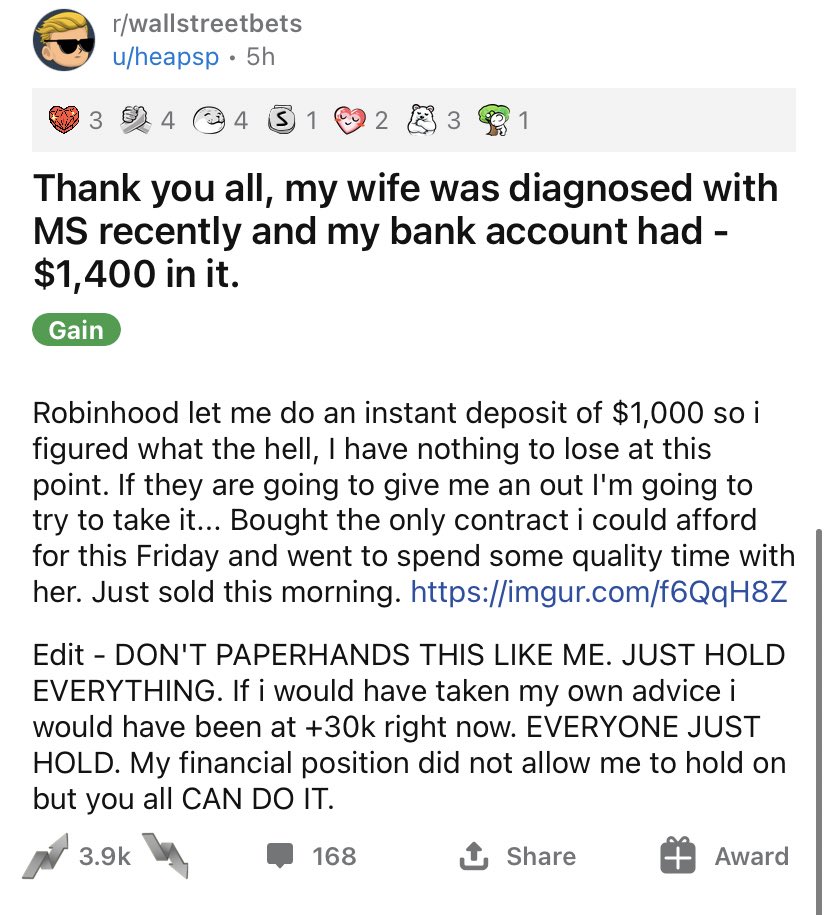
Coinbase is not worth $100B and if you buy them here you are in for a wake up call with a markdown.
A Thread: 👇
A Thread: 👇
Coinbase reported earnings for Q1
$750m Net Income on $1.8B of revenue, not bad. But what was Coinbase App (Retail) vs Coinbase Pro Exchange (Institution) ?
Here: investor.coinbase.com/news/news-deta…
$750m Net Income on $1.8B of revenue, not bad. But what was Coinbase App (Retail) vs Coinbase Pro Exchange (Institution) ?
Here: investor.coinbase.com/news/news-deta…

They recently posted their S-1, in which they suspiciously never talk about their revenue from their retail app vs their revenue from the institutional Coinbase Pro trading exchange. sec.gov/Archives/edgar…
Coinbase overall “Take Rate” (Revenue/Trade Volume) on their trading volume is 0.5%
That counts both Coinbase Pro and Coinbase App.
Volume is said to be split 1:2 App vs Pro
But a majority of that revenue is driven by retail investors on Coinbase App per CEOs recent call
That counts both Coinbase Pro and Coinbase App.
Volume is said to be split 1:2 App vs Pro
But a majority of that revenue is driven by retail investors on Coinbase App per CEOs recent call

Why is it bad that Coinbase makes most of their revenue from retail?
Well because their app fees are insanely high and not long term competitive.
On the app they charge between 1.5% and 10% on all trades both buys and sells
Exchange fees are below 0.5% and likely avg 0.1%
Well because their app fees are insanely high and not long term competitive.
On the app they charge between 1.5% and 10% on all trades both buys and sells
Exchange fees are below 0.5% and likely avg 0.1%

Other similar retail apps charge much lower fees:
PayPal charges 2.3% or $0.5
Robinhood charges $0.01
Voyager is Free
Cash App varies based on availability (but they give you a really shit execution)
And exchanges are all below 0.5%
cointracker.io/blog/2019-cryp…
PayPal charges 2.3% or $0.5
Robinhood charges $0.01
Voyager is Free
Cash App varies based on availability (but they give you a really shit execution)
And exchanges are all below 0.5%
cointracker.io/blog/2019-cryp…
So what it’s been that way for 3+ years, why will that change?
What happens when you can buy Crypto through Fidelity, Schwab, and TD Ameritrade with no trading fees?
What happens when low cost ETFs get into Crypto?
What happens as Crypto goes mainstream?
That day is coming
What happens when you can buy Crypto through Fidelity, Schwab, and TD Ameritrade with no trading fees?
What happens when low cost ETFs get into Crypto?
What happens as Crypto goes mainstream?
That day is coming
Coinbase had a huge headstart because of great management, good infrastructure and investor halo effects from Silicon Valley making them the first big exchange to gain wide US acceptance, but that won’t last forever.
But as this thread points out all of the brokerages and banks are going to be forced to enter the crypto market, because there is simply too much profit at stake.
https://twitter.com/johnstcapital/status/1379526362692788227
So you shouldn’t be buying Coinbase for their current economics because they are earning above normal short term profits that won’t last.
Basically this is the traditional porters 5 forces analysis where new entrants are coming to take your profit pool and you can’t stop them
Basically this is the traditional porters 5 forces analysis where new entrants are coming to take your profit pool and you can’t stop them
Coinbase is an innovator. They do have great custodian and infrastructure and a big opportunity to extend into other services.
That is what you should be buying them for, not for their high margin retail app business which is nearing the end of its useful life.
That is what you should be buying them for, not for their high margin retail app business which is nearing the end of its useful life.

The smart move is wait for the Crypto cycle to collapse (which even Coinbase admits will likely happen in their S-1) and the price of $COIN stock with it and buy it then. 

• • •
Missing some Tweet in this thread? You can try to
force a refresh








